Newsletter
Newsletter 95 - September 2018
Invitation to the Autumn Meeting on Sunday, September 30th 2018
Dear Members,
We are glad to invite you all to our Autumn Meeting on Sunday, September 30th. The conservatory of the Botanical Gardens, back entrance at Harvardlaan 10 in Utrecht, will be open from 10 a.m. on. There will be nice coffee and tea and the usual chat hour in which we can greet one another once more and exchange experiences while admiring the plants on display, whether brought by members or from the Botanical Gardens, or consulting the available literature.
 |
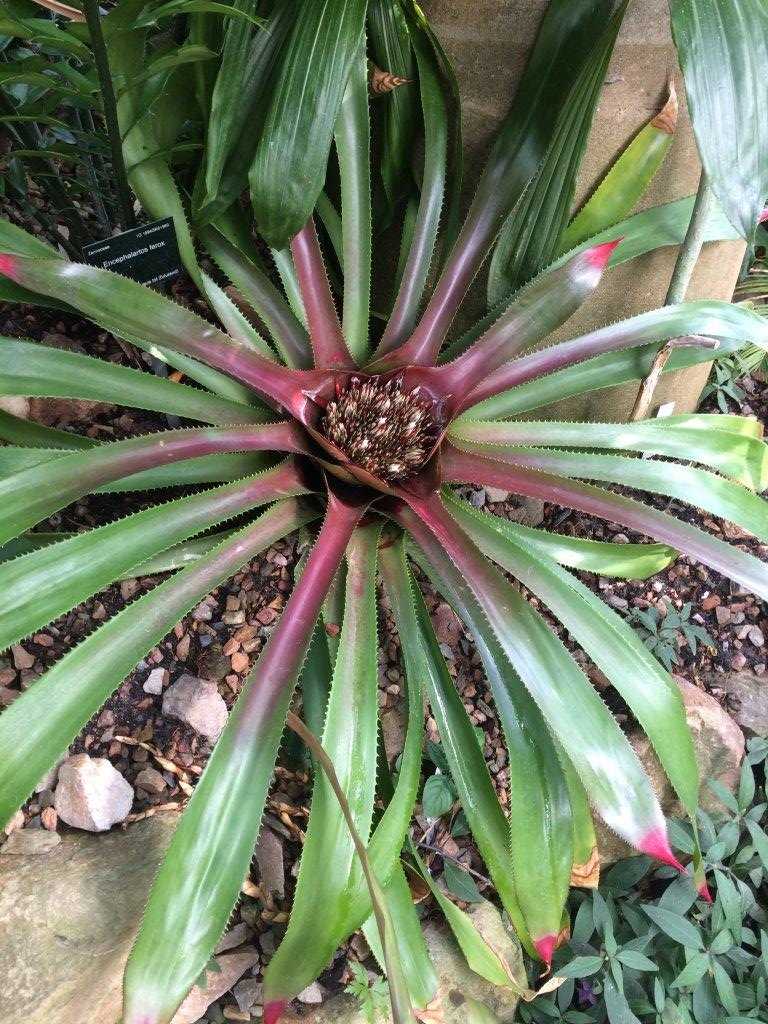 |
At 11 am we shall hold a housekeeping meeting. The agenda is given below. At the end of this meeting we shall discuss all the bromeliads on show. During lunch there will be a raffle of the plants brought for it. You are asked to bring any superfluous plants or cuttings from your collections for this lottery to cheer up your fellow hobbyists!
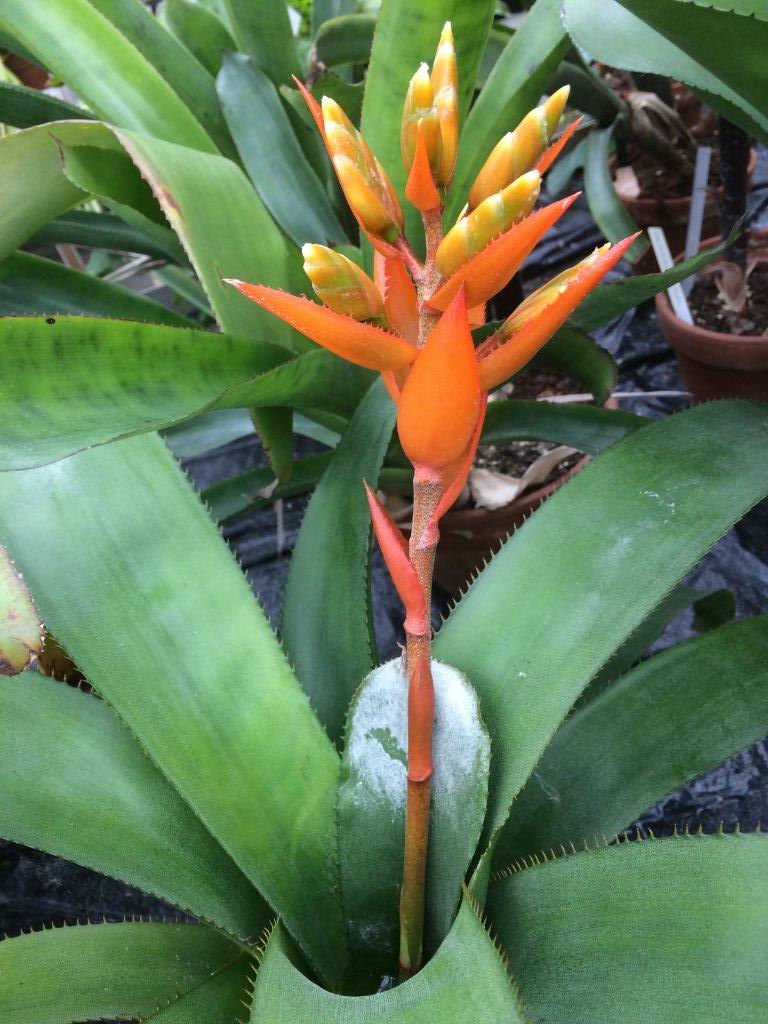 |
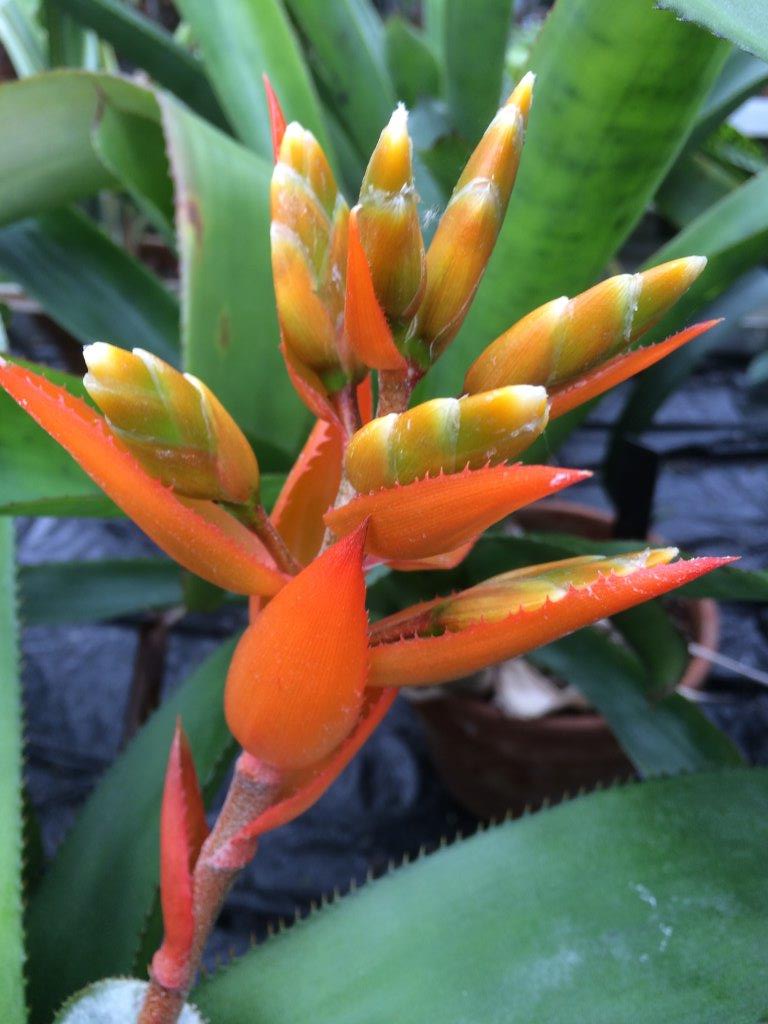 |
 |
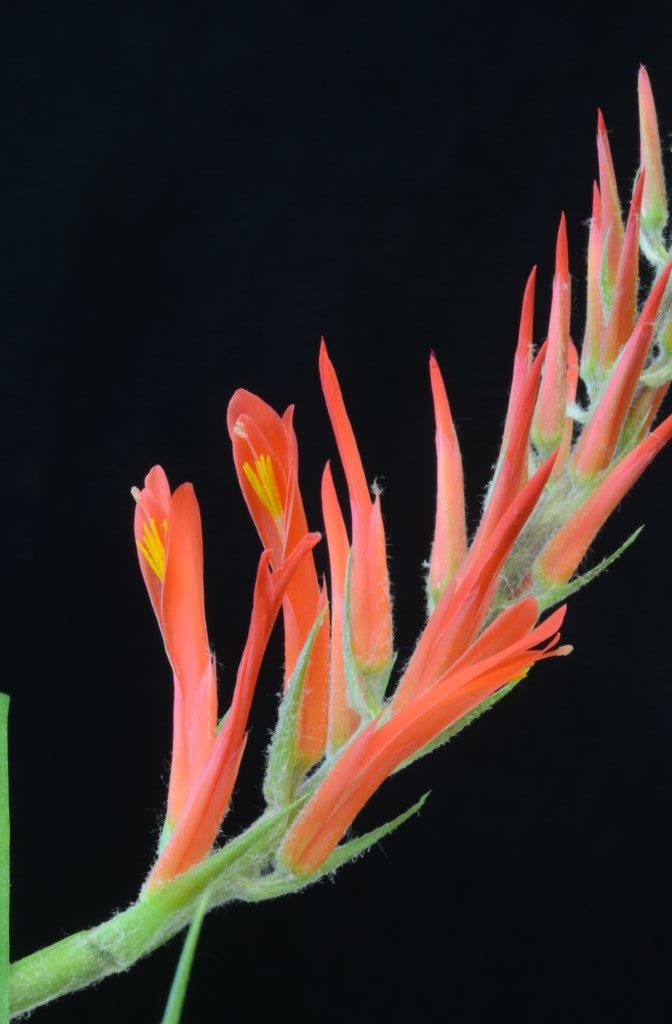 |
The afternoon programme will be provided by Renate Gouda, who will take us on a trip to Brazil.
We hope to be able to welcome all of you on the thirtieth and that we can once again spend an enjoyable day together.
 |
 |
 |
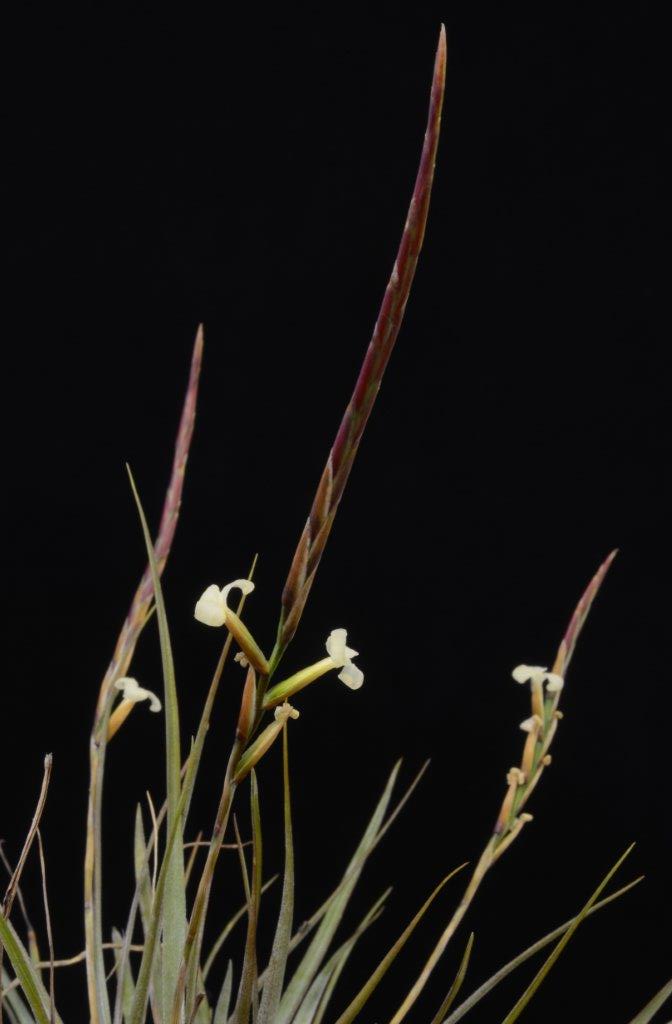 |
Agenda for the house-keeping meeting on 30 September 2018.
- 1. The Chairman's announcements and any incoming mail.
- 2. The Treasurer's announcements.
- 3. Report of the Spring Meeting of 18 March 2018. See newsletter 94.
- 4. Report on the visits, together with members of the German Bromeliad Society (DBG), to the Bak Company and to the Utrecht Botanical Garden on 14 April 2018.
- 5. Report on the day trip to the Van der Hoeven family on 10 June 2018.
- 6. Board elections for the Bromeliad Contact Group. In accordance with the BCG by-laws, our current Chairman, Eric Gouda is retiring and has made himself available for re-election. Other candidates should make themselves known to the Board so that the members can hear about them sufficiently early.
- 7. Current situation regarding implementation of the privacy legislation.
- 8. Further club activities projected, including Visiting Days.
- 9. Planning dates for club meetings in 2019.
- 10. Any other business and closure.
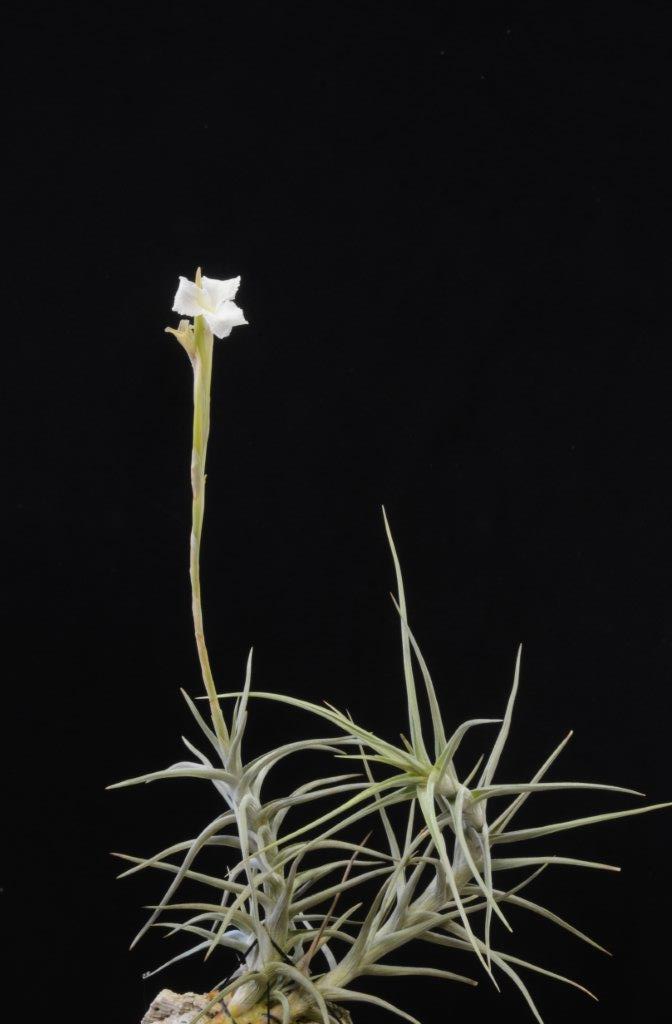 |
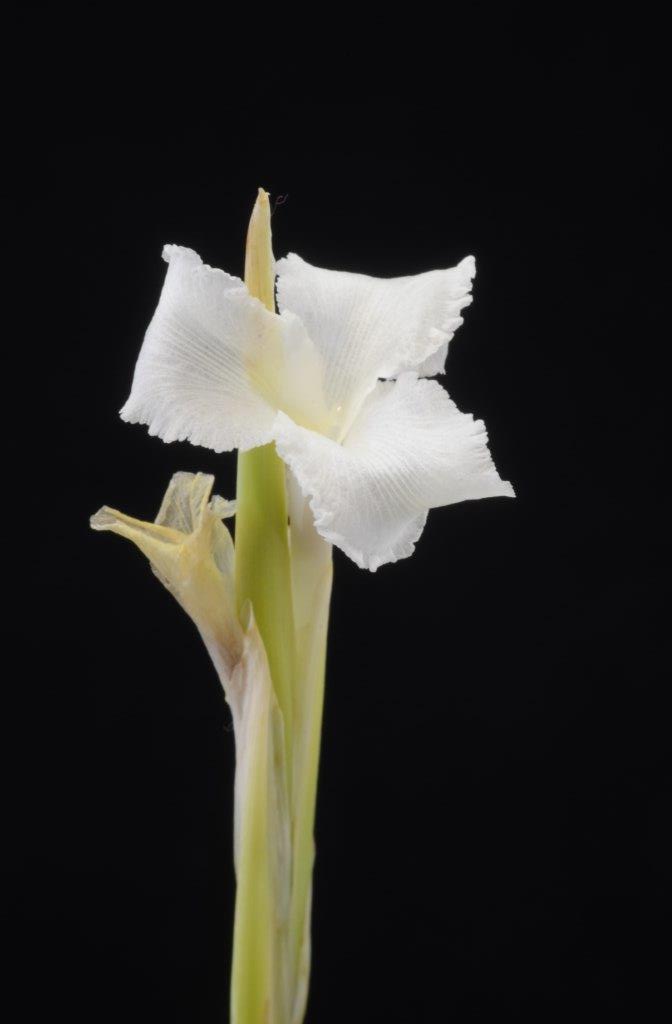 |
 |
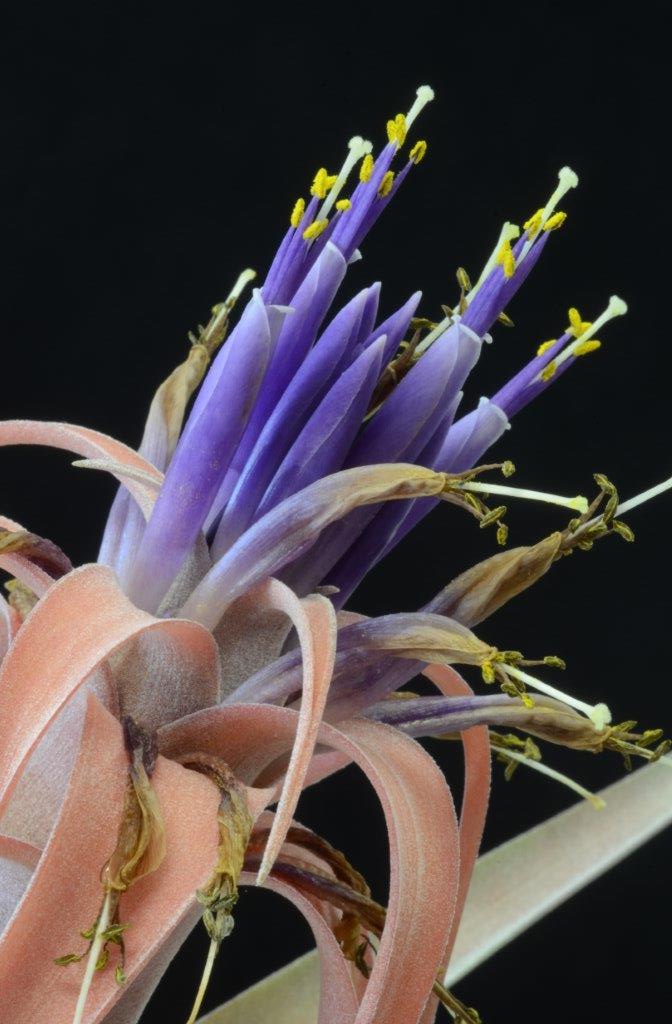 |
On behalf of the Board,
Eric Gouda, layout.
Roel Tomassen, report.
Translation: MaryRose Hoare
Plant Portraits
As you usually do, this time too you get a series of photos to brighten up the newsletter and with them a short story about the plants that we recently got to flower in the Utrecht Botanical Gardens. Firstly, Wittrockia superba (figs. 1 & 2). I had never really seen one before with its flowers open and just after this one was planted out in the big greenhouse it
flowered. Before this it had thus skipped several years. Wittrockia superba is a large plant so you will not often come across it in collectiions. If you want to see the actual plant then on September 30th you will have to walk into the big greenhouse and immediately look to your left as that is where it is now.
Figs. 3 & 4 are Aechmea romeroi, a pretty species that I looked at in the greenhouse just before the meeting but sadly did not see the flowers. Figs. 5 & 6 are Pitcairnia pavonii that may have already been discussed. It is an easy species that is common in Ecuador and so is often collected.
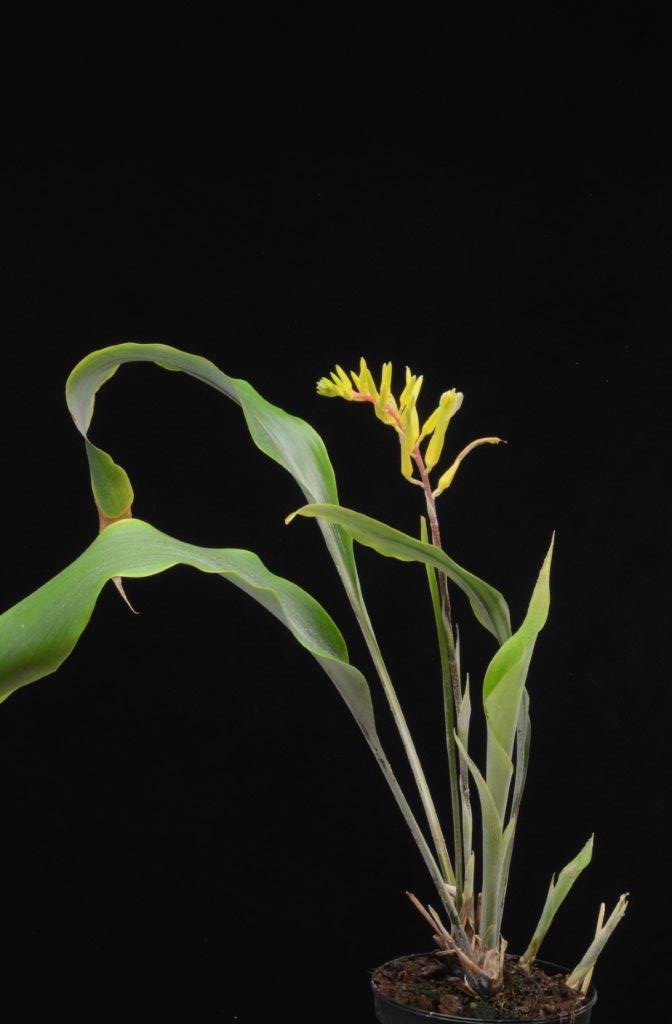 |
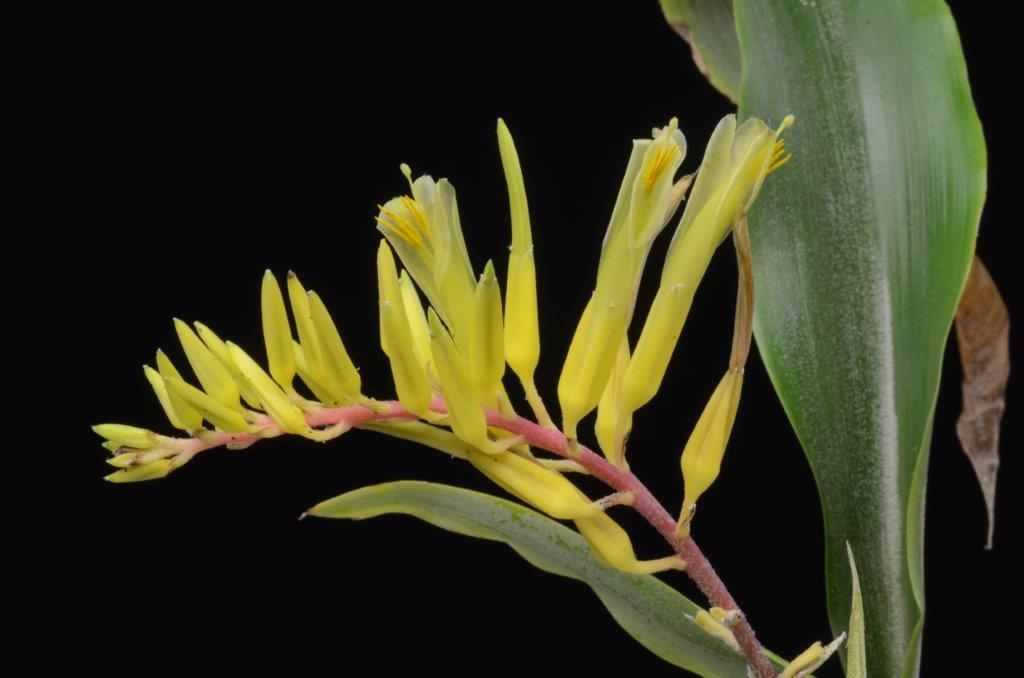 |
And then we come to some old wine in new bottles, as you probably know the following species but perhaps under other names. The revision of the sub-family Tillandsioideae due to molecular (DNA) research has resulted in the creation of a number of new genera and here we have two of them. Figs. 7 & 8 are Lutheria bibeatricis, previously Vriesea bibeatricis, named for the late Harry Luther who worked for many years on the Bromeliaceae in Selby Botanical Garden. Figs. 9 & 10 show Lemeltonia triglochinoides, previously known as Tillandsia triglochinoides, named for Elton Leme, a well-known Bromeliophile and good friend in Brazil. This is a night bloomer which is probably pollinated by moths and which smells wonderful.
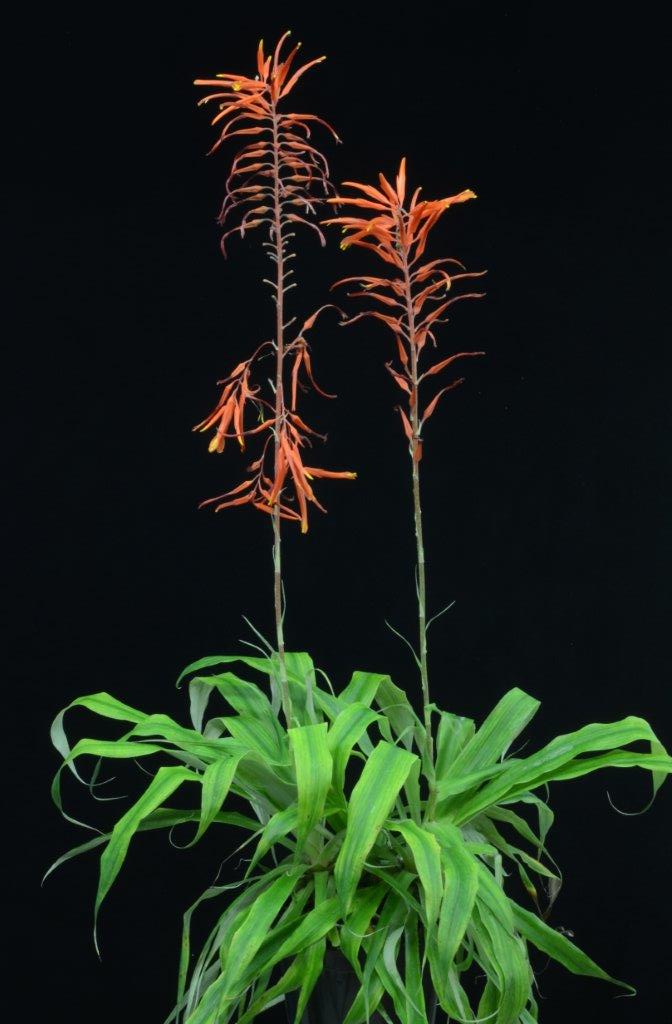 |
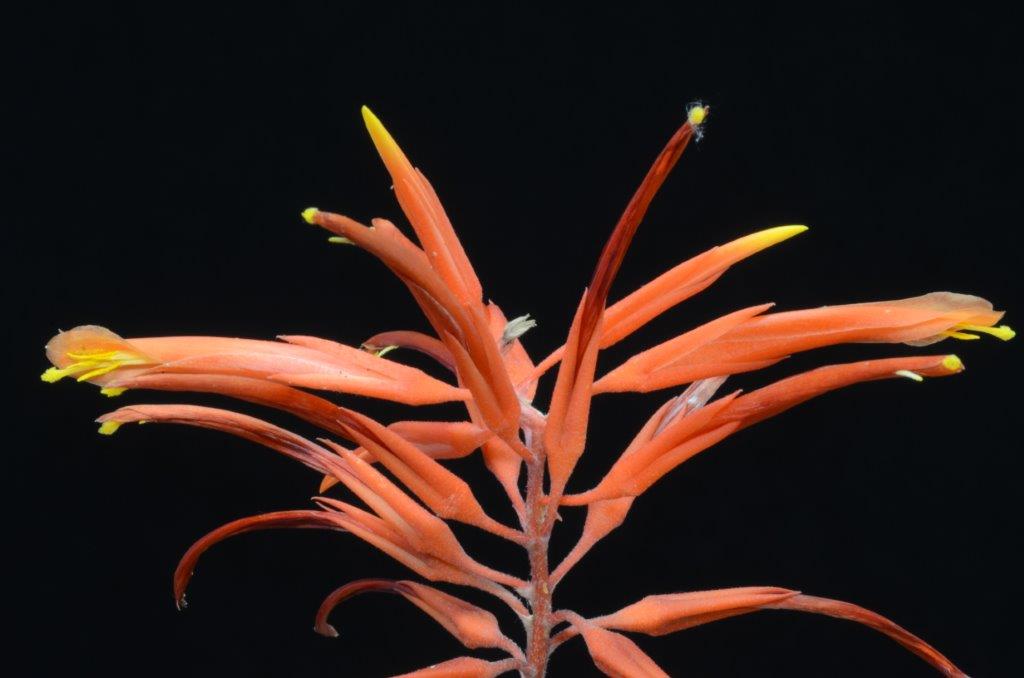 |
Figs. 11 & 12 show a somewhat aberrant Tillandsia diaguitensis that has broader leaves and stays rather shorter than the form you usually see. Usually they are very troublesome to get to flower but they grow extremely well. This seems to be different in this variant, that thus flowers when quite small but with a much shorter inflorescence. The other form makes huge clumps in which you usually only get a couple of elongated inflorescences. The two photos next to these, figs. 13 & 14, is Tillandsia riohondoensis, a fantastic species that produces many flowers at once. Thus it does not last as long as when the flowers would appear over time. The species used to be known as Tillandsia capitata 'Peach', it was only described in 2015 by Renate Ehlers and it indeed differs a lot from Tillandsia capitata.
We got a surprisingly lovely species to flower, one that you do not often see. Figs. 15 & 16 Pitcairnia chiapensis comes from Chiapas, Mexico but a specimen from Honduras (Atlántida) was also determined as this species (unverified!). The surprising combination of a yellow-green flower on a red peduncle is particularly attractive for your collection if you are fond of pitcairnias.
The next two photos, 17 & 18, show the rather better known Pitcairnia orchidifolia, also known by the name Pitcairnia grafi, a synonym. The species is easily recognised by the tight rosette of soft leaves and the yellow point of the flower bud (crown). Unfortunately this has almost completely disappeared in the open flower.
A lot of Pitcairnias this time but I did not want to deprive you of them. Here, in figs. 19 & 20, we see a giant, that I had to take off the table as otherwise the shade cloth would have prevented it from fully flowering. I was able to determine the plant as Pitcairnia recurvata. The plants were up to 2 metres high and difficult to get the whole plant on a photo. With its modest colouring, it is not a really pretty species but it has a very interesting flower shape and the question here is which pollinator can get to the nectar. The flower starts straight up but bends completely back downwards. It is a species that is common in Mexico and also in Belize and Guatemala and, rather less obviously, in Brazil though there I would to look at it in more detail as it seems very strange.
 |
 |
In figs. 21 & 22 we then see Racinaea tenuispica, a rather inconspicuous species as it is completely green and has a very finely divided inflorescence with small white flowers. The species is known from Venezuela, Colombia and Ecuador and I do not think many enthusiasts will be interested in it, although I have myself sown and cultivated them.
Finally we have Vriesea elata in figs. 23 & 24, from Venezuela en Colombia but likely also from Ecuador and Peru. The recent molecular research (DNA) has shown that the Vrieseas from the Andes should be placed in another genus: Cipuropsis. This is an old genus, from 1907 from Ule, then having only one species Cipuropsis subandina, which was later moved to Vriesea. In the meantime more species have been
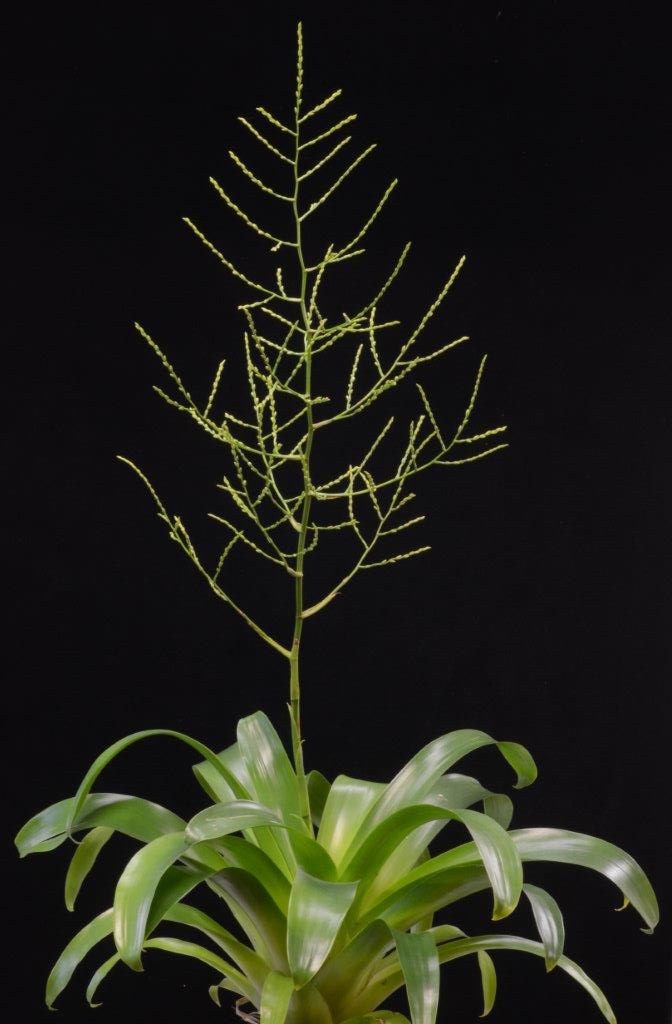 |
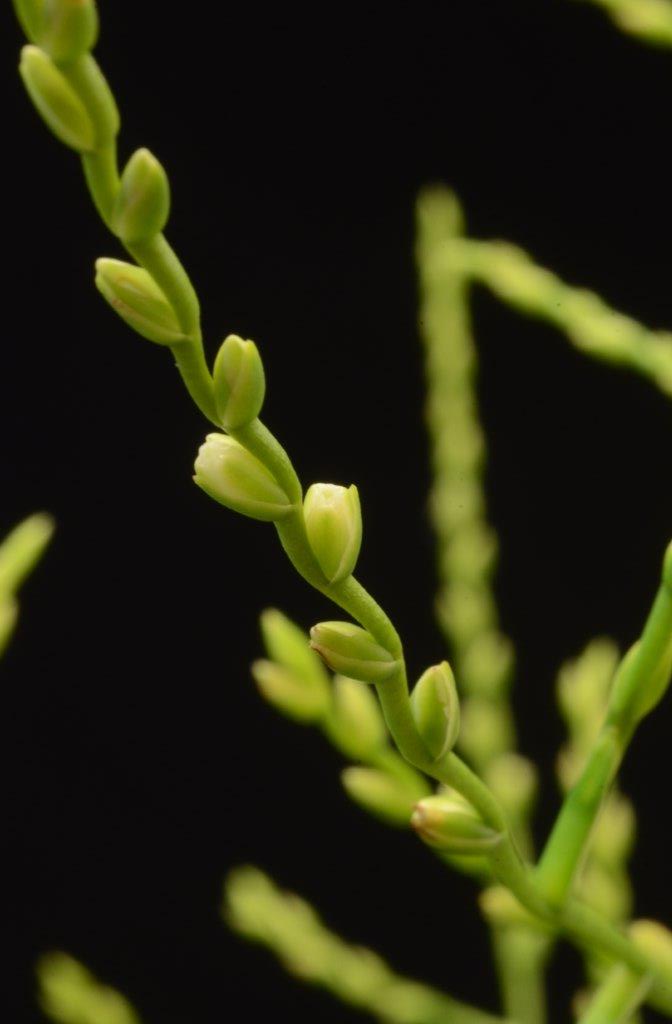 |
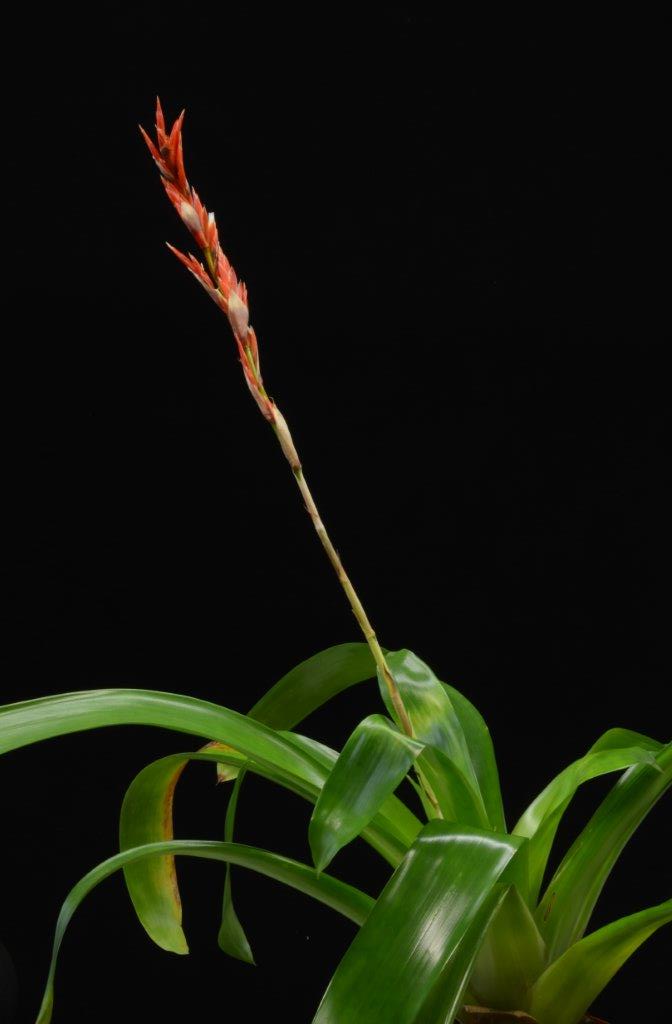 |
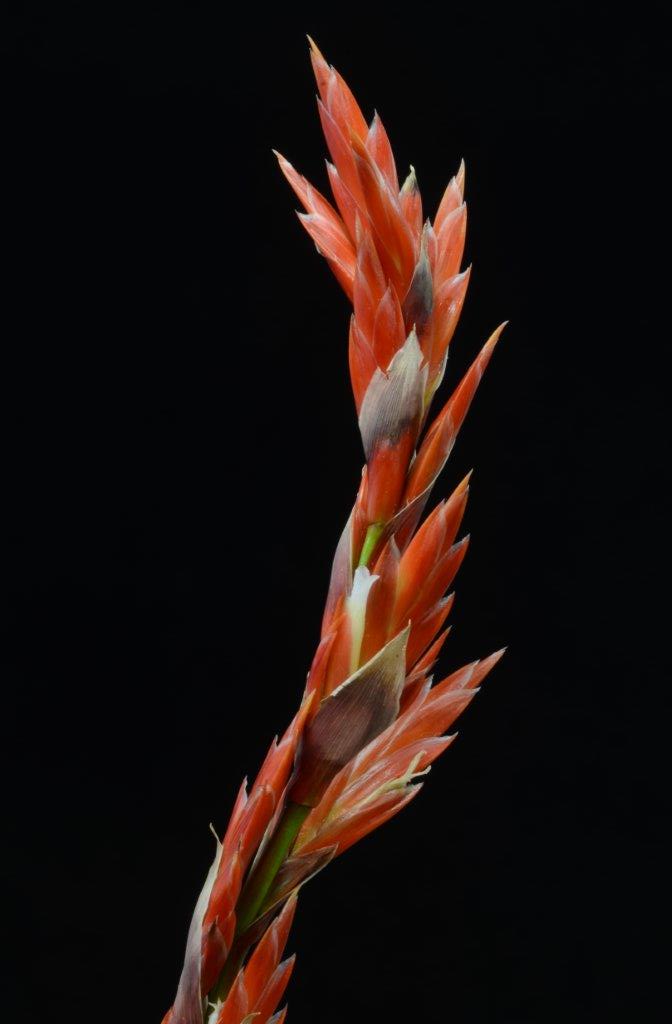 |
Bijgewerkt: 20181203, 2502 keer bekeken







 Home
Home